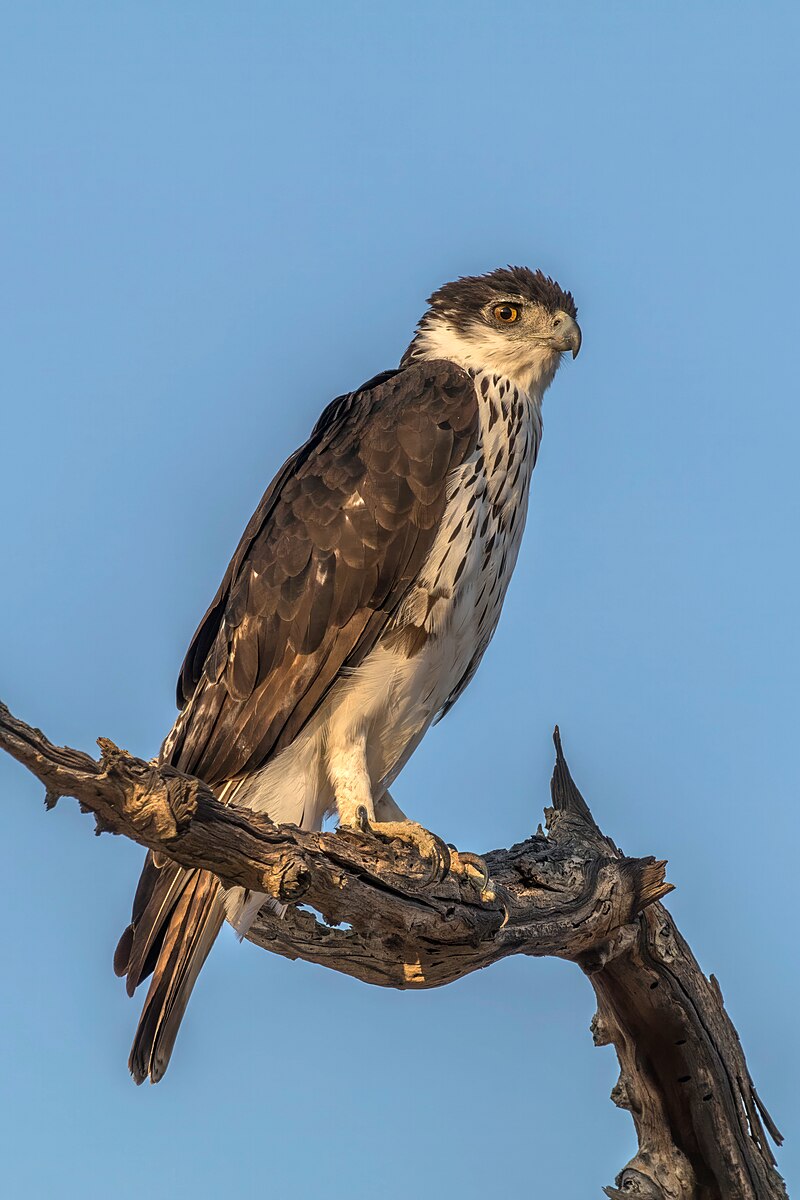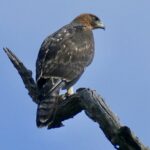The African hawk-eagle (Aquila spilogaster) is a widespread bird of prey found throughout much of sub-Saharan Africa. This species is known for its sedentary and stable breeding habits, with pairs typically breeding annually and producing an average of 0.54-0.82 young per nest per year. However, the mortality rate for young African hawk-eagles can be quite high, with up to 75% of individuals under 4 years old dying, primarily due to anthropogenic causes such as persecution and collisions with manmade objects.
Nesting and Breeding Habits
African hawk-eagles prefer to nest in riparian areas, along hill slopes, or on power pylons, building large nests composed of sticks and placing them high up in trees. The female lays 1-2 eggs, which must be incubated for around 43 days. When the eaglets hatch, they are covered in dark grey down and practice siblicide, with the older nestling often killing its younger sibling. The surviving nestling grows quickly and is fed by its mother, eventually learning to tear off and eat meat on its own.
Fledging and Maturity
 Image source: African hawk-eagle by Charles J. Sharp
Image source: African hawk-eagle by Charles J. Sharp
At around 61-71 days after hatching, the young eagle will fledge, or fly for the first time. Despite being categorized as a species of Least Concern, the African Hawk-eagle faces serious threats such as habitat loss due to the cutting of woodland trees and persecution by farmers due to its tendency to feed on domestic chickens and other fowl. Over the past few decades, the species has become scarce to rare outside of protected areas across Africa.
Threats and Conservation
Despite being categorized as a species of Least Concern, the African Hawk-eagle faces serious threats such as habitat loss due to the cutting of woodland trees and persecution by farmers due to its tendency to feed on domestic chickens and other fowl. Over the past few decades, the species has become scarce to rare outside of protected areas across Africa.
Habitat Loss
The cutting of woodland trees, which the African Hawk-eagle relies on for nesting, is a major threat to the species. This habitat loss can make it difficult for the birds to find suitable nesting sites and can also reduce the availability of prey.
Persecution by Farmers
The African Hawk-eagle’s tendency to feed on domestic chickens and other fowl has led to persecution by farmers who view the birds as a threat to their livestock. This persecution, which can include shooting, trapping, or poisoning the birds, is a significant threat to the species.
Conservation Efforts
Despite these threats, the African Hawk-eagle is still classified as a species of Least Concern by the IUCN. However, conservation efforts are needed to protect the species and its habitat. This may include the establishment of protected areas, the implementation of policies to limit habitat loss, and the education of farmers about the importance of the African Hawk-eagle in the ecosystem.
Conclusion
The African Hawk-eagle is a fascinating and important bird of prey found throughout much of sub-Saharan Africa. While the species is currently classified as a species of Least Concern, it faces significant threats from habitat loss and persecution by farmers. Conservation efforts are needed to protect this species and ensure its long-term survival.
References:
- Global Raptor Information Network. 2021. Species account: African Hawk-eagle Aquila spilogaster. Downloaded from http://www.globalraptors.org on 3 Dec. 2021.
- Kemp, A. C., P. F. D. Boesman, and J. S. Marks (2020). African Hawk-Eagle ( Aquila spilogaster), version 1.0. In Birds of the World (J. del Hoyo, A. Elliott, J. Sargatal, D. A. Christie, and E. de Juana, Editors). Cornell Lab of Ornithology, Ithaca, NY, USA. https://doi.org/10.2173/bow.afrhae1.01
- The Peregrine Fund. African Hawk-eagle. https://peregrinefund.org/explore-raptors-species/eagles/african-hawk-eagle


